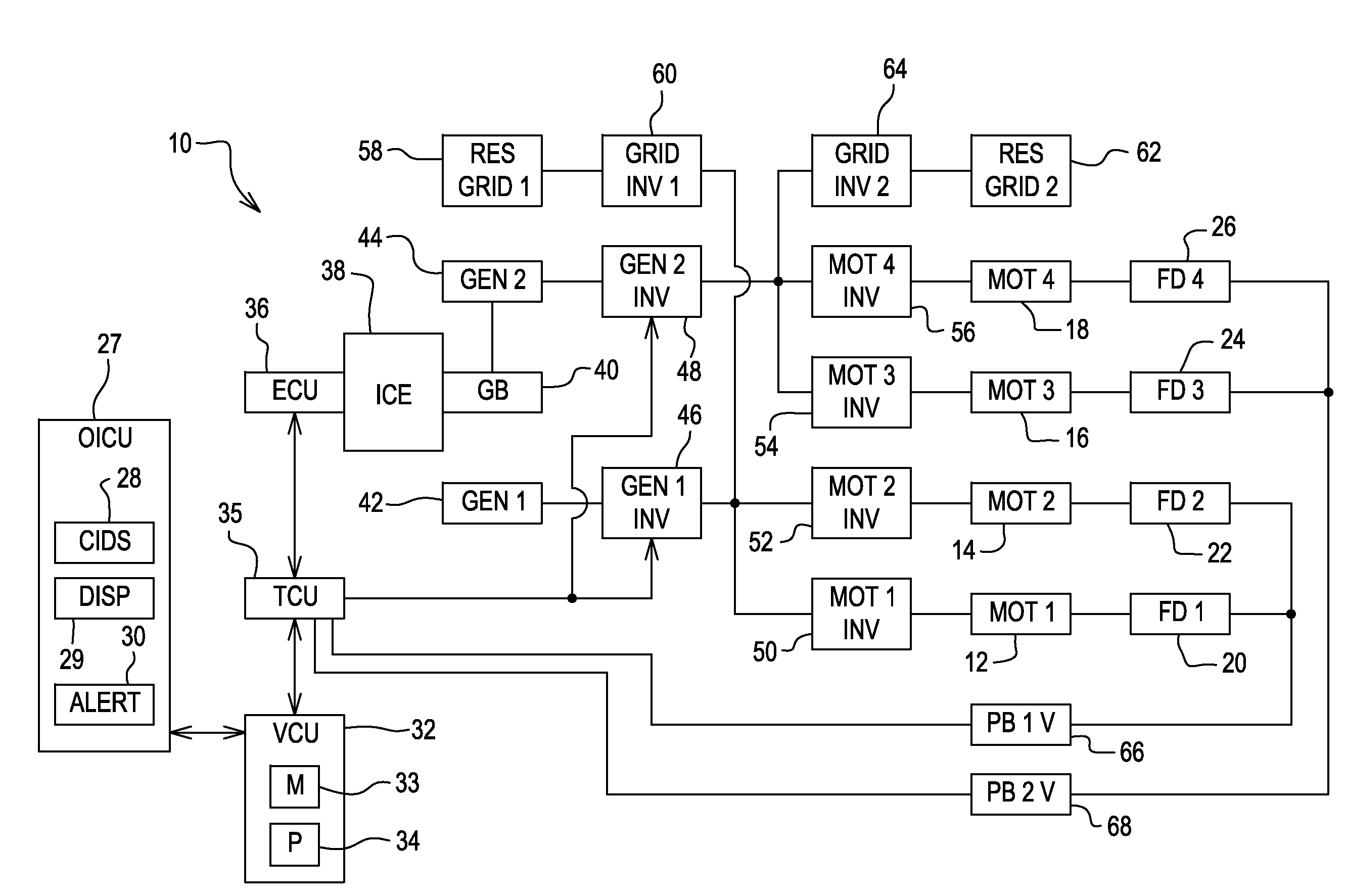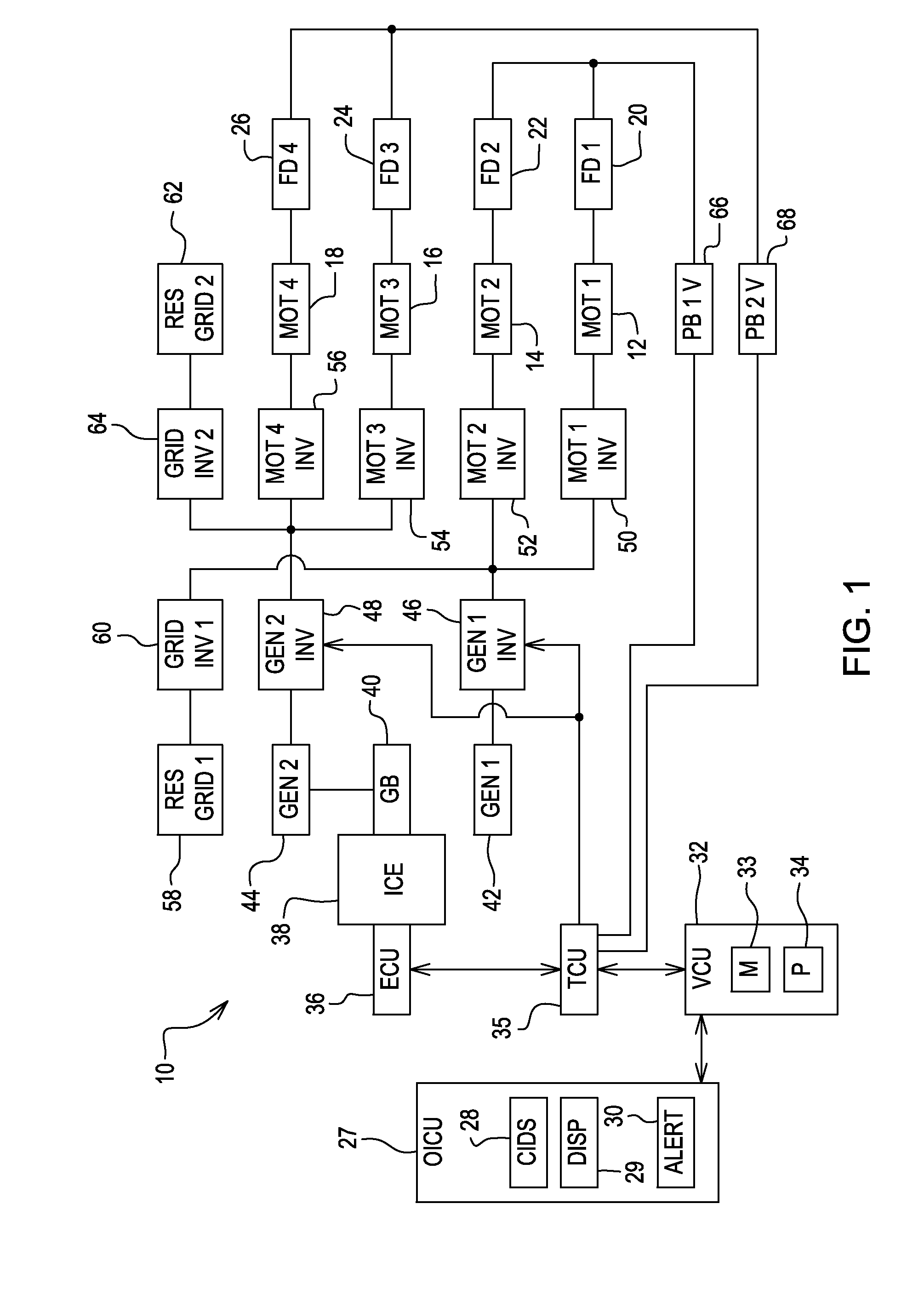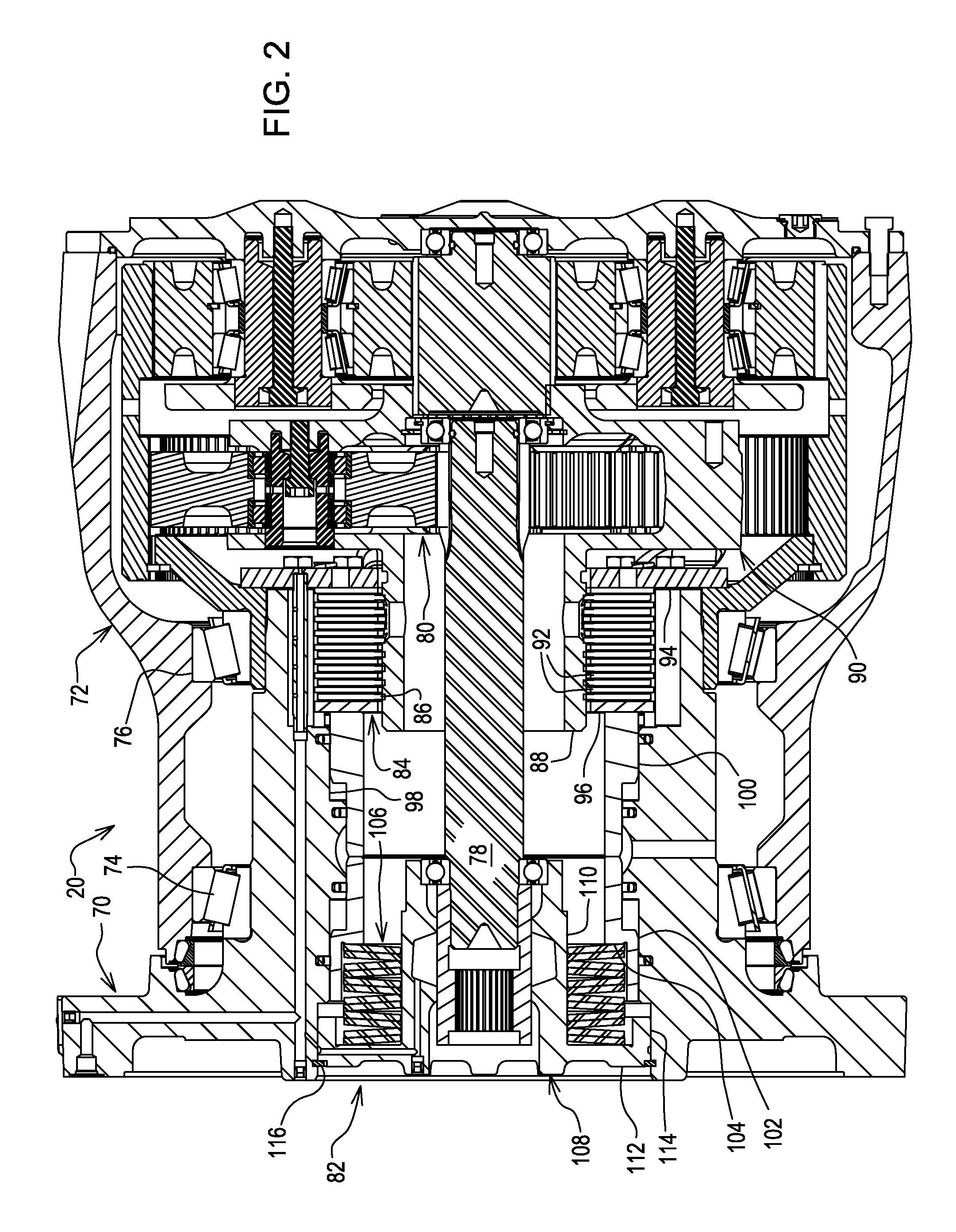Measuring Brake Wear
a technology of brake wear and measurement, applied in the direction of brake systems, process and machine control, instruments, etc., can solve the problems of affecting the design of the machine, and affecting the operation of the machin
- Summary
- Abstract
- Description
- Claims
- Application Information
AI Technical Summary
Benefits of technology
Problems solved by technology
Method used
Image
Examples
Embodiment Construction
[0017]Referring now to FIG. 1, there is shown a motor control system 10 for controlling four identical wheel drive Motors (MOT 1) 12, (MOT 2) 14, (MOT 3) 16 and (MOT 4) 18 having output shafts coupled for respectively delivering torque for driving four identical Final Drives (FD 1) 20, (FD 2) 22, (FD 3) 24 and FD 4) 26 for driving front and rear pairs of drive wheels (not shown) of an industrial vehicle such as a loader, for example. The electric Motors 12, 14, 16 and 18 are preferably 3-phase switched reluctance motors, but need not be.
[0018]The motor control system 10 includes an Operator Interface Control Unit (OICU) 27 including Control Input Devices (CIDS) 28 such as throttle and brake test input buttons, for example, by which an operator may send out various control signals. The OICU 27 also includes a Display (DISP) 29 and an Alert Device (AD) 30, the latter being an audio or visual alert device such as a buzzer or light, for example, by which an operator is alerted to certai...
PUM
 Login to View More
Login to View More Abstract
Description
Claims
Application Information
 Login to View More
Login to View More - R&D
- Intellectual Property
- Life Sciences
- Materials
- Tech Scout
- Unparalleled Data Quality
- Higher Quality Content
- 60% Fewer Hallucinations
Browse by: Latest US Patents, China's latest patents, Technical Efficacy Thesaurus, Application Domain, Technology Topic, Popular Technical Reports.
© 2025 PatSnap. All rights reserved.Legal|Privacy policy|Modern Slavery Act Transparency Statement|Sitemap|About US| Contact US: help@patsnap.com



